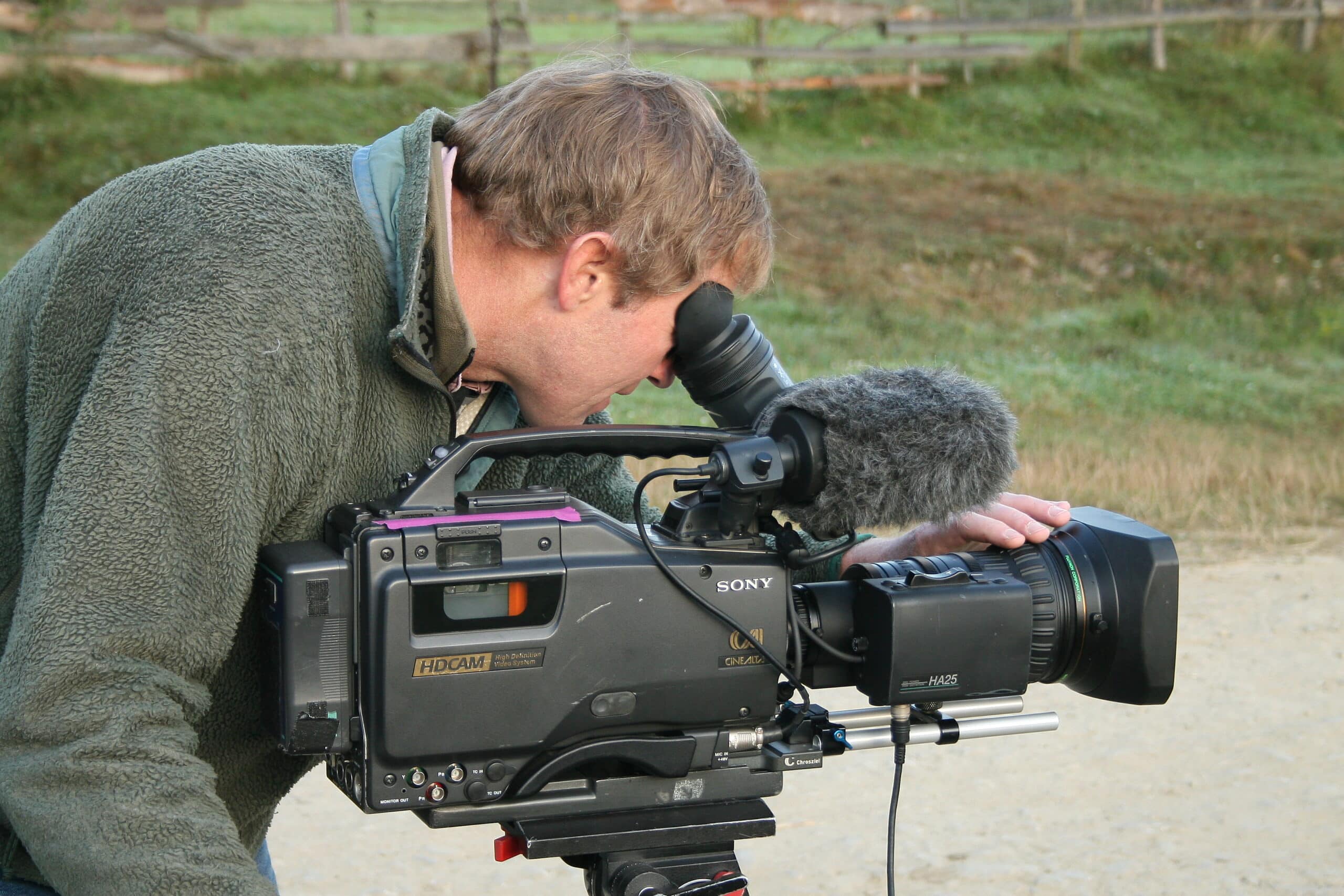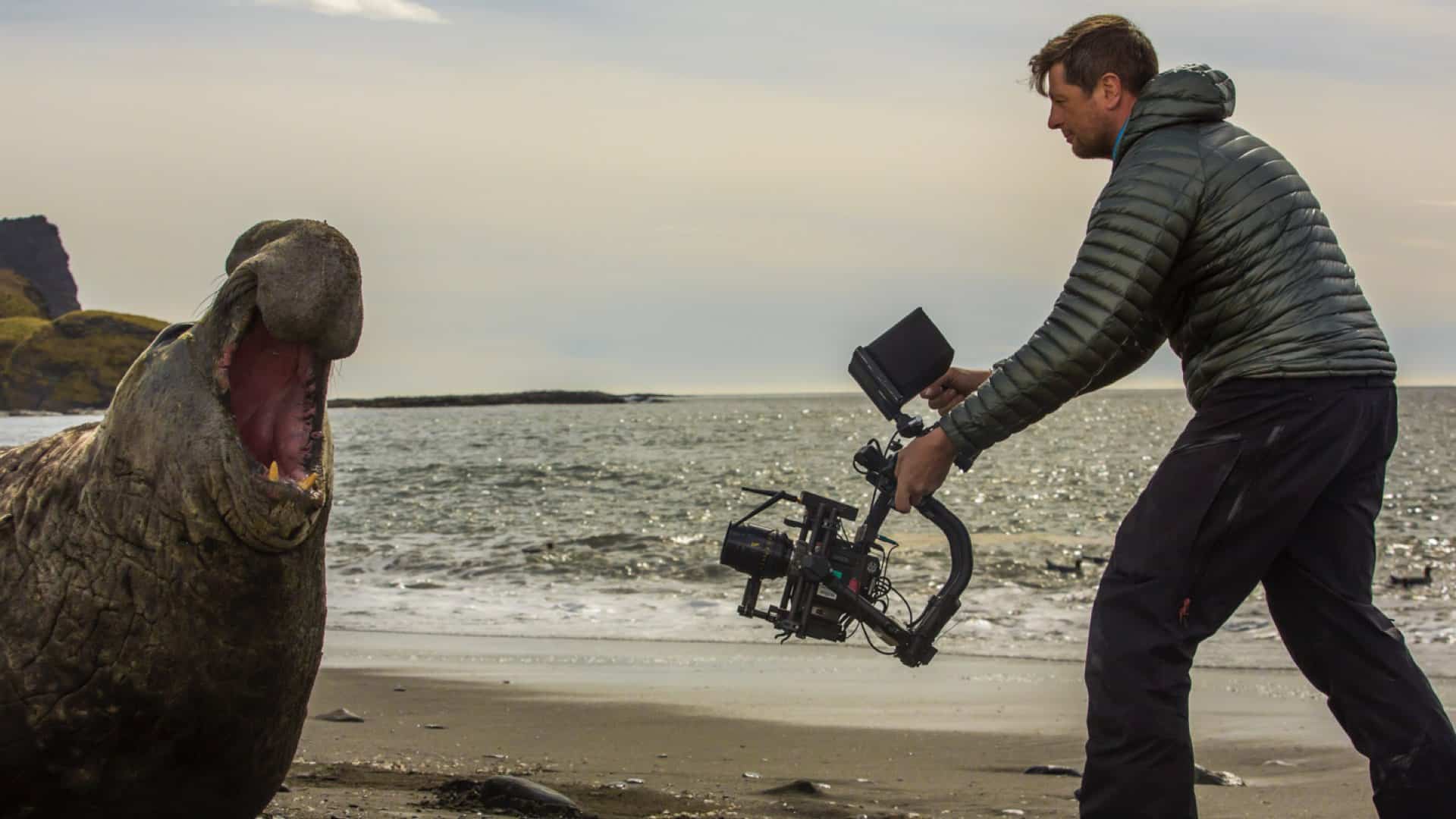When you’re about to embark on the thrilling journey of wildlife documentary filmmaking, the camera you choose becomes your most trusted companion. It’s the eye through which the world will see your stories unfold, and the tool that turns your vision into a visual feast for audiences. So, let’s get you started on this exciting path with the right gear in hand.
Key Takeaways
-
Wildlife documentaries require cameras with high-resolution, strong autofocus, and good low-light performance.
-
The Canon EOS R5 stands out for its full-frame sensor and 8K video capabilities, perfect for capturing detailed wildlife footage.
-
Sony’s PXW series offers versatility with high dynamic range and raw recording for post-production flexibility.
-
Telephoto lenses are essential for capturing close-up shots of wildlife from a distance, without disturbing their natural behavior.
-
Support gear like tripods and gimbals are crucial for stabilizing shots in the unpredictable wilderness.
Getting Started: Camera Picks for Budding Filmmakers
As a budding wildlife filmmaker, you might not have the budget of a ‘Planet Earth’ production, but that doesn’t mean you can’t start creating your own wildlife documentaries. There are several entry-level cameras that offer great features for wildlife videography without breaking the bank.

“Shane Moore – National Geographic.jpg …” from commons.wikimedia.org and used with no modifications.
Best Entry-Level Cameras for Wildlife
If you’re just starting out, consider these options:
-
Canon EOS 90D: With its crop sensor, 4K video capability, and impressive autofocus system, the 90D is a great starting point for aspiring wildlife filmmakers.
-
Sony Alpha a6600: This mirrorless camera is compact, offers in-body stabilization, and shoots 4K video, making it a solid choice for capturing wildlife on the move.
-
Nikon Z50: Nikon’s entry-level mirrorless camera is another excellent option, with 4K video and a robust build that’s ready for the outdoors.
While these cameras might not have the same specs as the high-end models used in professional productions, they’re more than capable of helping you tell your own wildlife stories. And remember, the story and the passion behind it are just as important as the gear you use.
Capturing the Wild: Selecting the Right Camera for Wildlife Documentaries
Choosing the right camera for wildlife documentaries is a blend of art and science. You need a camera that not only captures the beauty and detail of nature but also withstands the challenges of outdoor filming. A good wildlife documentary camera must have the ability to shoot in high resolution, track moving subjects with precision, and perform well in varying lighting conditions.
Key Criteria for Wildlife Documentary Cameras
When scouting for the perfect wildlife documentary camera, you should look for:
-
High-resolution: To capture the finest details of your wildlife subjects.
-
Robust autofocus: For keeping up with fast-moving animals.
-
Excellent low-light performance: Because the wild doesn’t always offer perfect lighting.
-
Durability: Your camera needs to handle the elements like a champ.
-
Long battery life: Because power outlets are rare in the great outdoors.
These features will ensure that your camera can keep pace with the dynamic environment of wildlife filming, allowing you to bring your audience right into the heart of nature.
Understanding Camera Specifications for Dynamic Filming
Let’s break down the technical specs that make a camera ideal for wildlife documentaries:
-
Sensor size: A larger sensor can capture more light, which is invaluable in low-light conditions and for achieving a shallow depth of field.
-
Frame rate: Higher frame rates are crucial for slow-motion footage, revealing the majestic movements of wildlife.
-
Weather sealing: Your camera must endure the unpredictable weather you’ll encounter in the wild.
These specifications are your roadmap to choosing a camera that won’t let you down when you’re knee-deep in the wilderness, trying to get that perfect shot of a fleeting moment.

“Wildlife Cinematography: Capturing the …” from ymcinema.com and used with no modifications.
Top Picks: Cameras That Bring Wildlife Documentaries to Life
Now that you know what to look for, let’s explore some of the top camera contenders that can transform your wildlife visions into cinematic reality.
Canon EOS R5: A Wildlife Videographer’s Powerhouse
The Canon EOS R5 is a trailblazer in the realm of wildlife documentary filmmaking. Its full-frame sensor and ability to shoot 8K video mean you can capture wildlife in astonishing detail, giving your audience an immersive experience. But that’s just the beginning.
Full Frame Sensor Benefits
The R5’s full-frame sensor is a game-changer because:
-
It allows for higher dynamic range, meaning you can capture the nuances of dawn or the subtleties of dusk with equal clarity.
-
It improves the overall image quality, giving you crisp, clear footage that can be cropped or zoomed in post-production without losing detail.
Animal Recognition Autofocus Capabilities
One of the most impressive features of the Canon EOS R5 is its animal recognition autofocus. This technology enables the camera to lock onto animals’ eyes, ensuring that your subject is always in sharp focus, even when it’s on the move. This is crucial because:
-
It reduces the chances of missing a shot due to focusing errors, which is often the case with fast-moving subjects.
-
It allows you to concentrate on framing and composition, knowing that the camera’s autofocus has got your back.
Maximizing 8K Video for Wildlife
Shooting in 8K is not just about future-proofing your footage; it’s about capturing the kind of detail that brings viewers into the heart of the action. With the R5, you can:
-
Reveal textures and patterns in animals’ fur and feathers that are invisible to the naked eye.
-
Crop into your footage without losing quality, perfect for when you can’t get physically close to your subject.
Stay tuned for more insights on the cameras and equipment that will elevate your wildlife documentary to the next level.
Sony PXW Series: Versatility in the Wild
For those who are seeking a camera that’s as versatile as the wildlife they’re filming, the Sony PXW series deserves attention. Renowned for their robust build and exceptional image quality, these cameras are a favorite among professionals for a reason. They are equipped with features that cater to the unpredictability of wildlife and the environments they inhabit.
High Dynamic Range and Its Impact on Image Quality
High Dynamic Range (HDR) is a critical feature in the Sony PXW series that significantly enhances image quality. HDR allows you to capture a broader range of light and dark areas in a single shot, ensuring that the finest details are visible even in contrasting lighting conditions. This means that whether you’re filming in the harsh midday sun or the soft light of dawn, the PXW series captures every scene in vivid detail.
Raw Recording Explained
Raw recording is another standout feature of the Sony PXW series. When you record in raw, you’re capturing all the data from the camera’s sensor, giving you a wealth of information to work with in post-production. This level of control is invaluable for wildlife documentaries, where color grading and fine-tuning details can make all the difference in storytelling.
Red Helium: The Filmmaker’s Frontier Tool
Red Helium cameras are the stuff of legend in the filmmaking world, and they’ve earned their reputation. These cameras offer a cinematic look and feel to your footage that is hard to match. Built for the rigors of professional use, Red Helium cameras are a powerhouse for wildlife documentaries, where capturing the essence of the wild is everything.
Low Light Performance and Extended Filming Hours
Low light performance is where the Red Helium truly shines. Its sensor’s sensitivity allows you to continue shooting in the dimmest conditions without sacrificing the quality of your footage. This means that when nocturnal animals come out to play, your Red Helium is ready to capture every moment.
The Role of Frame Rates in Capturing Motion
Frame rates are vital when it comes to capturing the swift movements of wildlife. Red Helium cameras can shoot at high frame rates, allowing you to slow down the action and appreciate the fluidity of motion that often goes unseen by the naked eye. This capability is essential for revealing the hidden details in the behavior and movement of animals.
-
High-resolution filming to capture the finest details in wildlife
-
Robust autofocus systems that keep fast-moving subjects in sharp focus
-
Advanced low-light capabilities for filming under any natural lighting conditions
-
High frame rates for stunning slow-motion sequences
-
Durable construction that withstands the elements and rugged use in the field
Equipment Essentials: Beyond the Camera Body
While the camera body is the heart of your wildlife documentary setup, the lenses and support gear you choose are just as crucial. They work together to create a cohesive system that allows you to capture the beauty of the wild with clarity and stability.
Let’s dive into the lenses and support equipment that can make a significant difference in your wildlife documentary filmmaking.
Lenses That Spot a Leopard from a Mile
Telephoto lenses are a must-have in the world of wildlife documentaries. They allow you to capture close-up shots of animals from a distance, keeping both you and the wildlife safe. A good telephoto lens will enable you to fill the frame with your subject, even if it’s far away, and the optical quality will ensure that every detail is sharp and clear.
The Importance of Telephoto Range
When selecting a telephoto lens, consider the importance of telephoto range for capturing those far-off subjects in wildlife documentaries.
-
The focal length determines how close you can zoom in on your subject.
-
The maximum aperture affects your ability to shoot in low light and achieve a shallow depth of field.
-
The lens’s optical stabilization helps reduce camera shake, which is vital when shooting at long focal lengths.
When Prime Lenses Outshine Zooms
While zoom lenses offer versatility, there are times when a prime lens can be the superior choice. Prime lenses typically have wider apertures, which gather more light and are ideal for low-light situations. They also tend to be sharper than zoom lenses, providing exquisite detail that can make your wildlife footage stand out.
Support Gear for Stable Shots
Stable shots are essential in wildlife documentaries, and that’s where tripods and gimbals come into play. A sturdy tripod is indispensable for static shots, especially when using heavy telephoto lenses. Gimbals and stabilizers, on the other hand, are perfect for on-the-move shooting, allowing you to follow the action smoothly and steadily.
Tripods and Monopods
A reliable tripod or monopod provides the stability needed for sharp images, particularly with long lenses. They’re also invaluable for time-lapse sequences or when waiting patiently for the perfect moment to capture an elusive creature.
Gimbals and Stabilizers
Gimbals and stabilizers allow you to move with your subject without introducing unwanted shake. They’re essential for tracking shots, where keeping the camera steady can be the difference between a professional-looking sequence and one that distracts the viewer.
In the next section, we’ll reveal the behind-the-scenes tech used in the acclaimed ‘Planet Earth’ series and share tips for budding filmmakers looking to get started in wildlife documentary filmmaking. Stay with me as we uncover the secrets to creating breathtaking wildlife narratives.
Behind the Scenes: The Tech of ‘Planet Earth’
The groundbreaking ‘Planet Earth’ series brought the natural world to our screens like never before. The technology used to capture those iconic images set a new standard for what’s possible in wildlife documentary filmmaking.
With a combination of cutting-edge cameras, such as the Red Epic and specialized lenses, the filmmakers were able to capture stunning 4K footage that brought viewers closer to nature. They employed gyro-stabilized camera systems for smooth aerial shots and used hidden cameras to capture intimate moments without disturbing wildlife.
The Cameras and Lenses That Defined a Series
The ‘Planet Earth’ series utilized a variety of cameras to achieve its diverse range of shots. The Red Epic was particularly favored for its high-resolution and slow-motion capabilities. But the series didn’t rely on a single camera; it was the strategic use of different cameras that gave ‘Planet Earth’ its cinematic quality.
For instance, specialized macro lenses allowed the crew to reveal the intricate details of the smallest creatures, while telephoto lenses were used to film predators and prey from a safe and unobtrusive distance.
Techniques for Aerial and Ground-Level Shots
Aerial shots provide a unique perspective on the landscape and the wildlife that inhabits it. The ‘Planet Earth’ team used helicopters equipped with Cineflex and other gyro-stabilized camera systems to capture breathtaking vistas.
For ground-level shots, they often relied on camera traps and long-lens setups, waiting for days or even weeks to capture elusive animals in their natural behavior. These techniques, combined with patience and expertise, resulted in the unforgettable imagery that defines the series.




